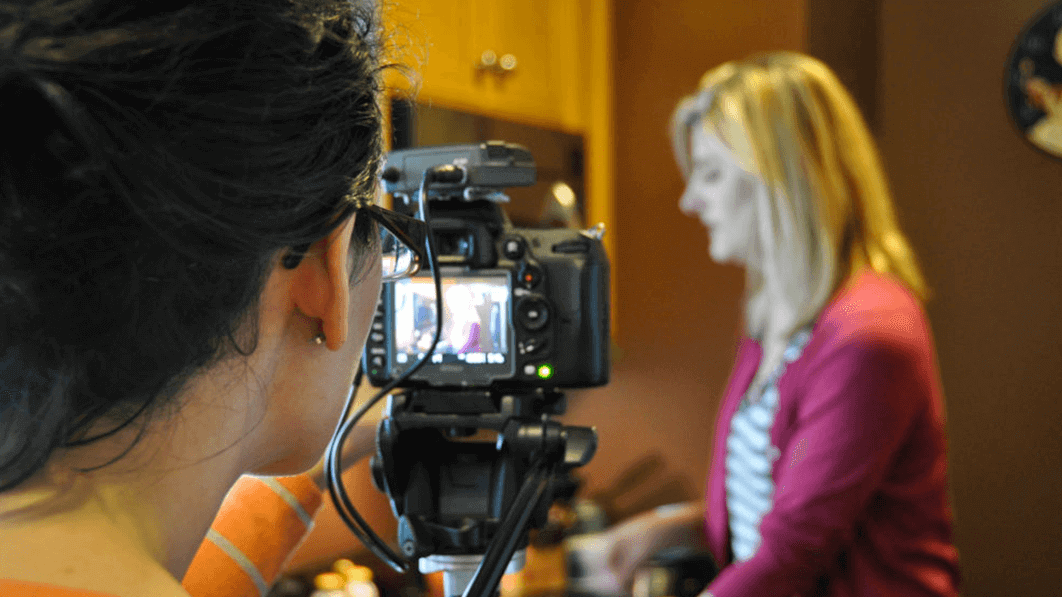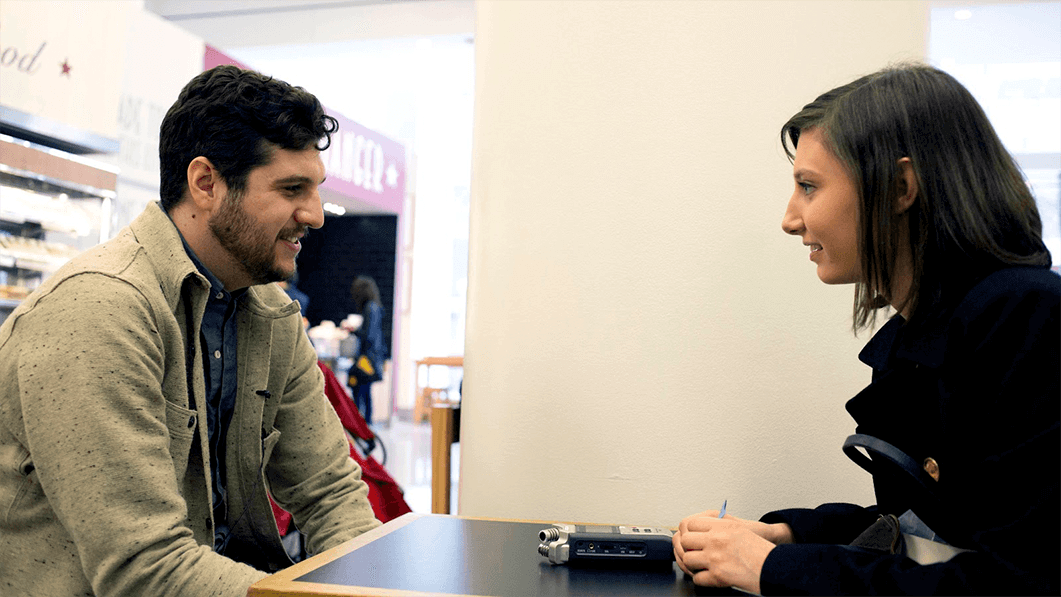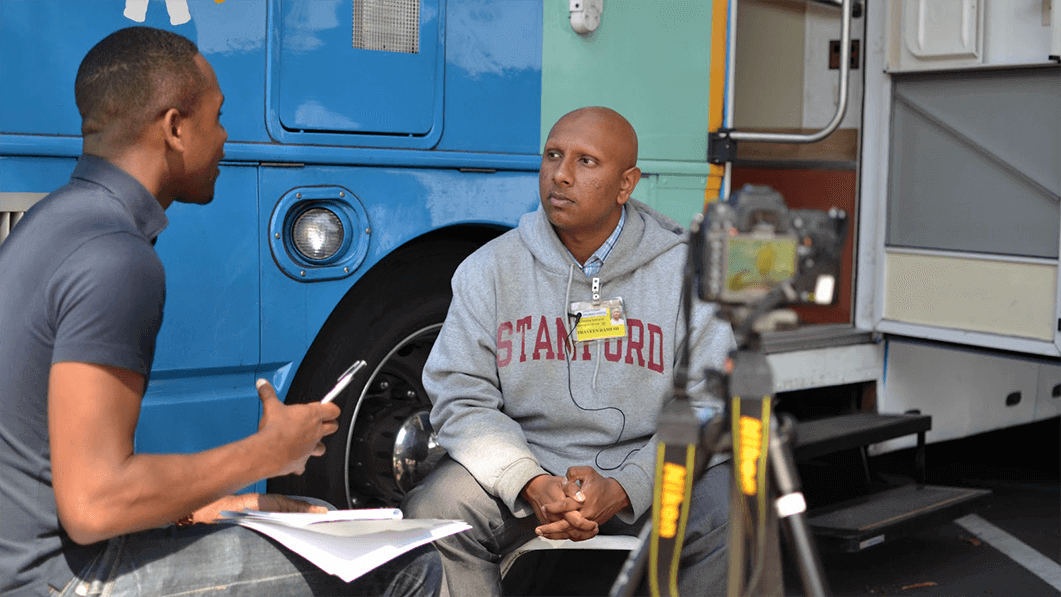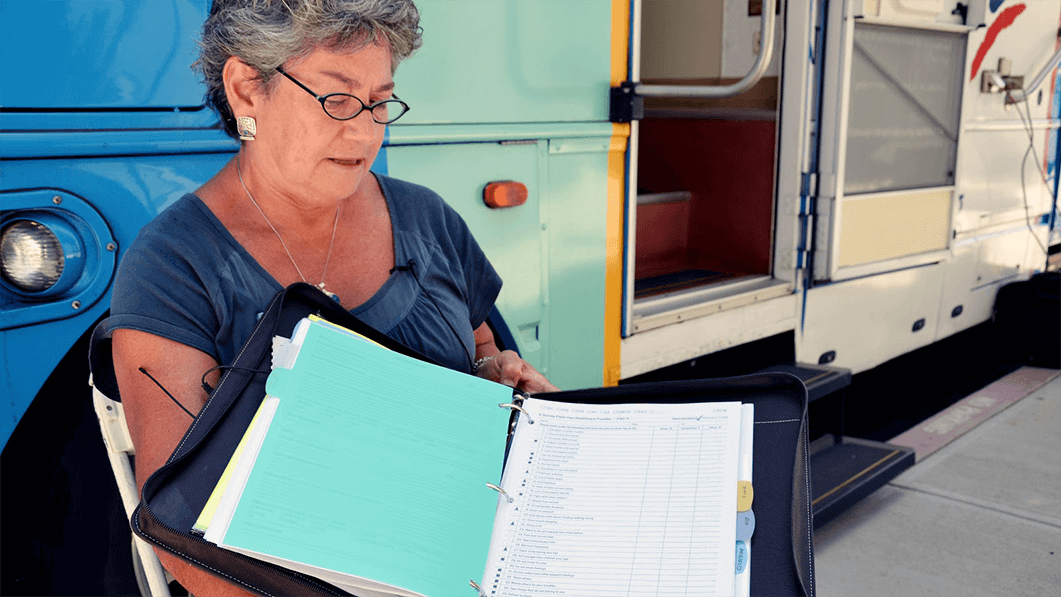Learn more about your customers with open-ended interviews.
Make research your competitive advantage. Use open-ended interviews to develop real empathy for your customers and fuel new insights.
April 15, 2016
Open-ended interviews with customers are an essential technique to add to your professional skill set. No matter your background or role, learning how to do an open-ended interview will create a ton of value for you and your team.
If you’re a member of a design team, you benefit from how your customer sees and interacts with the world.
If you’re a customer service rep, you’ll better understand the context your customer is coming from.
As an executive, there is no faster way to a customer’s heart than being open to what they care about.
The difference between open-ended interview and a regular interview is that you let the customer tell (and show) you what they think is important.
You don’t batter them with questions and keep them on topic. You don’t ask them what they think of your ideas.
On the surface, this appears to be a simple approach. Yet too many people let their existing mindset and habits prevent them from doing this well.
Here’s a sampling of the barriers I often see:
- You don’t want to appear unprepared.
- You think a very carefully written set of questions will ensure specific detailed feedback
- You’re afraid the customer will just complain and make unreasonable requests.
- Your customer doesn’t really understand your business.
- You don’t want to waste your customer’s time.
These are all reasonable concerns. But they’re irrelevant if you really want to connect with your customer and learn something valuable.

It all started with ethnography and the cultivation of empathy.
Open-ended interviewing is a method used in the social sciences to study people and their cultural context. The key is that the interviewer seeks to understand the world from the point of view of the people they are with.
This is empathy.
When you understand the world from another person’s point of view, you understand why they do what they do. You understand their values, incentives, and behavior.
You don’t develop empathy by asking a specific list of predetermined questions. It requires more openness and curiosity.
Learning to develop empathy for customers is critical because it gives you a competitive advantage.
The traditional differentiators in business — function and performance — have leveled out. It is difficult for your product to do something uniquely different from your competitors. It’s almost impossible to compete as the best-in-class performance in most categories.
What’s more important is how your product or service does what it does — its character, its meaning to your customer.
And doing things in a way that resonates with customers requires you to understand and empathize with them.
OK, enough theory, let’s dig into how to structure an open-ended interview.
A four-step structure for open-ended interviews.
Although the open-ended interview is driven by what the customer wants to tell you, you still need to prepare.
You want to have a feel for an overall structure of the conversation. Do this by creating a list of topics or questions that you would like to know more about.
In ethnography, these are called “foreshadowed questions.” It’s a fancy term for the notion that you think about them beforehand so they guide your listening and engagement during the interview.
The overall structure is straightforward.
Your conversation has:
- An introduction
- A beginning
- A middle
- An end

1. The Introduction – Set the stage for a successful interview.
The introduction gives you a chance to put your interviewees at ease and build some trust with them. Trust is important so they tell you what they really think instead of what they think you want to hear.
The introduction has three main components:
- Thank them for their time and for sharing their knowledge and expertise.
- Transparently share your motives.
- Set them up as the expert.
By establishing your interviewee’s point of view as more important than your own, you gain their trust and openness to share.
Keep in mind that even the most accomplished person has real doubts about his or her relevance to your goal.
“Can I really be helpful?”
“Do I have anything important to say? My job, role, and activities are so banal.”
“Why would you be interested? Maybe you’ll end up thinking of me as a fraud.”
Never be modest about what you’re interested in and why. You should reveal your project’s purpose, why the interviewee’s information may be helpful, and your project sponsor.
If you are coy and keep information hidden from interviewees, they will behave similarly. Cultivate a spirit of openness and sharing to make your interview more valuable.
Finally, you need to state that they are the expert.
Let them know that you are naive about the area, and are genuinely curious in “how things really work.” You aren’t interested in how things are “supposed to be,” but how they really are. Messiness included!
This introduction sets the stage for an insightful open-ended interview.

2. The beginning – Start with a broad tour, not the jugular.
The start of the interview should begin with a “broad tour” question.
Start with something like, “Tell me about how things work around here.” (Replace “things” with the specific activity or process you’re trying to understand.)
Avoid framing the first question from your point of view. Don’t start by asking what they think about a hypothesis you have. Remember, the interview is about understanding your customer’s view of the world.
A broad tour question allows your interviewees to provide you the basic lay of their land — the terms of their field, the major components of their world, their natural priority, and how things work.
Think of this as a map of the territory. It presents different places you can choose to explore.
3. The middle – Develop specific understanding of particular things.
One or more areas of the territory will undoubtedly relate to your foreshadowed questions. Match one of your areas of interest with one of the interviewee’s points and get started.
“So let’s start with what you called, ‘Getting the project off the ground.’ Tell me about that stage. How does it work?”
Notice that the form of question is more of a statement — “Tell me about …” This helps keep you from injecting personal biases into the conversation.
When you are interested in hearing more, use the phrase “Say more about that.”
This neutral tone allows your interviewees to go where they need to go. You are not giving them an indication of your judgement of the content. You aren’t forcing them to talk about topics in a certain way.
It’s surprising how strong our social nature is. Interviewees always look for clues in how you ask and respond to their statements. They’re naturally seeking ways to give you answers that align with your perspective. Avoid this temptation and remain as neutral as possible.
After the first 10 minutes or so, interviewees will sense that you really are interested in hearing what they have to say. From then on, they’ll provide better and better information.
As your conversation continues, refer to your foreshadowed questions. You’ll probably notice that you have good coverage of the topics. And you didn’t have to ask a specific question for each topic.
You may also notice an area you haven’t touched on and want to cover. Simply connect that interest to something your interviewees already mentioned and ask for them to tell you about that aspect of their experience.

4. The end – Opening up possibilities, and the unexpected closing gem.
The bulk of your detailed information and insights will come from the middle of the interview.
With 10 to 15 minutes left in the interview, you have a new opportunity. This is the time to shift from “how things are” to “how things could be.”
Reinforce how helpful the interview has been and how much more you understand their area of expertise. Acknowledge a few areas of high value from the interview.
Then let them know you’d love to hear how they think things could be improved.
How would things work if they were in charge or could redesign aspects of the system? I call this the “blue sky” portion of the interview.
In the blue sky area, listen for really interesting ideas that ignore the status quo.
Interviewees might even state a number of constraints that keep their ideas from being possible. These are all great reinforcements to understand what’s holding things back.
As you bring closure to the interview, thank participants again and let them know you’re wrapping up a little early to respect their time. Sometimes they will allow you to continue because there is more to share. But generally, you should wrap up just before time and ask permission to contact them with follow up questions and clarifications. After getting their confirmation, collect your things and …
Listen for the closing gem.
Often, when finishing an interview and your attention is elsewhere, your interviewees will think about one more thing to share. Sometimes it is a perfect distillation of a point they couldn’t articulate earlier. Sometimes they remember something that is critical, but you just didn’t talk about.
It often has a final dose of insight for you.
Take the extra three minutes to listen to their closing gem and make sure to jot it down and thank them one final time.
Learn to conduct an open-ended interview to drive deep customer insight.
Open-ended interviews are a stellar vehicle for learning more about your customer’s world. But far too often, we over-structure and over-specify the content of an interview.
This minimizes the chances you’ll hear something interesting, detailed, or surprising.
Use the four-part structure and techniques above to generate specific content that answers your questions. The interview will reveal new topics, issues, and ideas you could have never anticipated.



